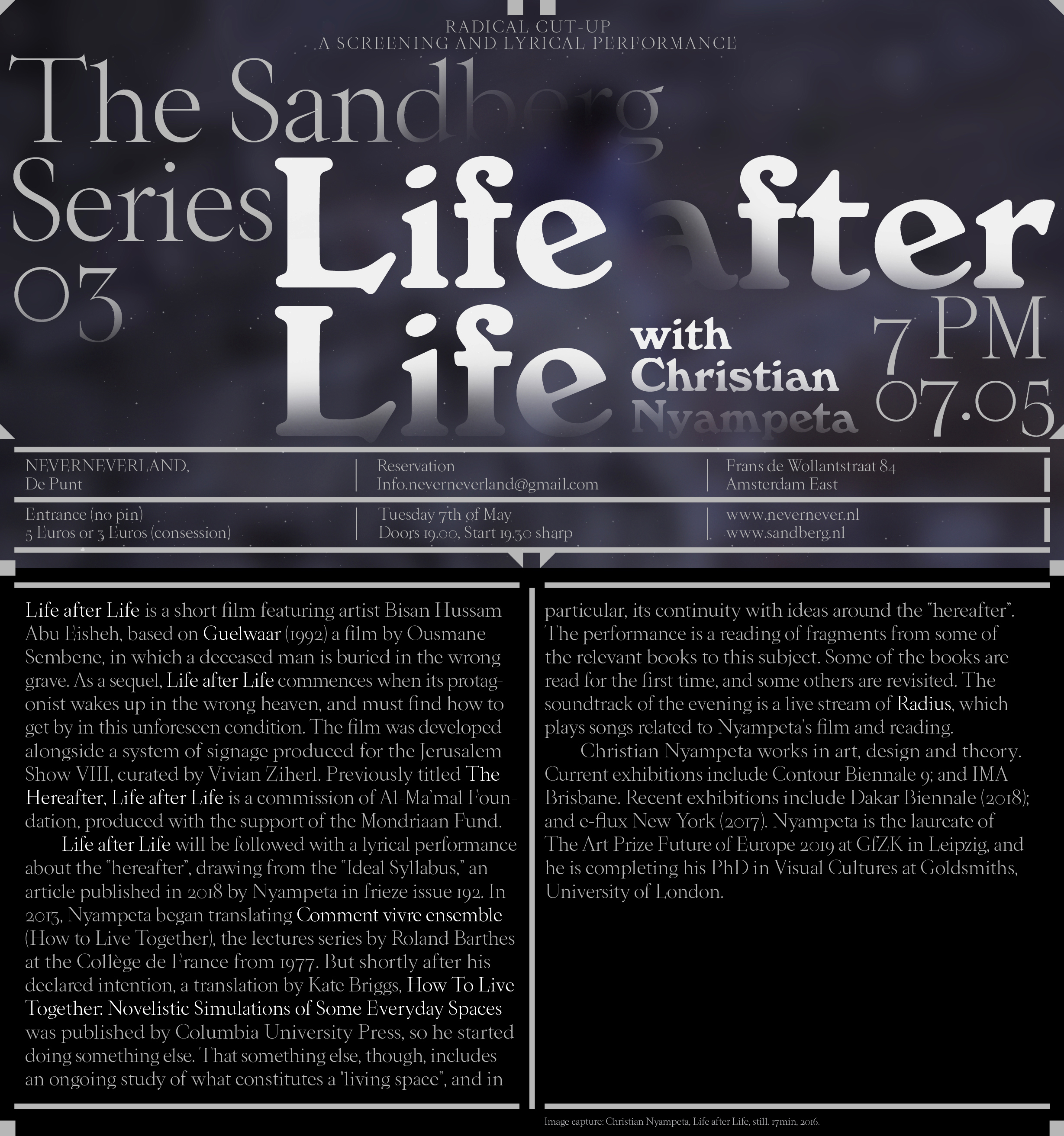
Life after Life is a short film featuring artist Bisan Hussam Abu Eisheh, based on Guelwaar (1992) by Ousmane Sembene, in which a deceased man is buried in the wrong grave. As a sequel, Life after Life commences when its protagonist wakes up in the wrong heaven, and must find how to get by in this unforeseen condition. The film was developed alongside a system of signage produced for the Jerusalem Show VIII, curated by Vivian Ziherl. Previously titled The Hereafter, Life after Life is a commission of Al-Ma'mal Foundation, produced with the support of the Mondriaan Fund.
Life after Life will be followed with a lyrical performance about the hereafter, drawing from the “Ideal Syllabus,” an article published in 2018 by Nyampeta in frieze issue 192. In 2013, Nyampeta began translating Comment vivre ensemble (How to Live Together), the lectures series by Roland Barthes at the Collège de France from 1977. But shortly after his ambitious intention, a translation by Kate Briggs, How To Live Together: Novelistic Simulations of Some Everyday Spaces was published by Columbia University Press, so he started doing something else. That something else, though, includes an ongoing study of what constitutes a "living space”, and in particular, its continuity with ideas around the “hereafter". The performance is a continual reading of fragments from some of the books that have had an impact on Nyampeta's thinking. Some of the books are read for the first time, some others are revisited, and others remain to be read. The evening starts with the trailer of Sometimes It Was Beautiful (2018), commissioned by Maria Lind at Tensta Konsthall; and it extends with a live streaming of Radius, which plays the evening’s soundtrack of songs related to Nyampeta’s films and reading.